View count:
3495
Oki Islands UNESCO Global Geopark
Oki Islands UNESCO Global Geopark Summary[1]
Boundary of the Oki Islands UNESCO Global GeoparkThe Oki Islands UNESCO Global Geopark area (indicated by the boundary line in the map below) encompasses four inhabited and many uninhabited islands located in the Sea of Japan 40-80km north of Shimane Prefecture (south-west of mainland Honshu). As isolated islands, marine life and the fisheries industry is of central importance to the way of life of the people. In consideration of this, aside from land area, the geopark also includes 1km of sea area from the coastline. The geopark has a total area of 673.5 km² (land area 346.0 km² and marine area 327.5 km²).
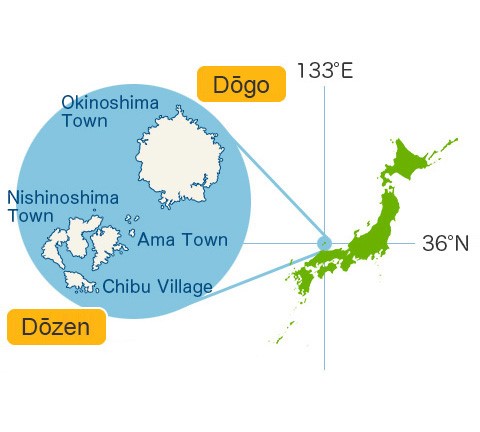

Features of the Oki Islands UNESCO Global Geopark
The land of the Oki Islands has developed through a series of stages: from being a part of the Eurasian Continent, the land sunk to the bottom of a lake on the continent, and then the bottom of a deep sea as the Sea of Japan was formed. This land then surfaced due to volcanic eruptions, and the islands were born. They later became connected to mainland Japan during the glacial ages, to eventually become the remote islands they are today. This geohistory has given birth to the unique ecosystem and cultural traditions of the Oki Region.
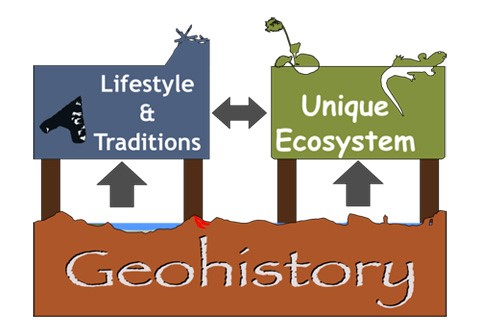
Uncover the Mysteries of the Land!
The Oki Islands UNESCO Global Geopark isn’t just a place where you can see precious geological heritage. It is a place that tells the story of the land, connecting the ‘Geohistory’ of the islands created over millions of years, the ‘Unique Ecosystem’ that developed on this land, and the diverse ‘Lifestyles and Traditions’ of the people that are still present today.In the geopark there are many ‘geosites’ where you can also learn about the geology of the land as well as the ecosystem and the lifestyles of the people who live there. There is a story to be discovered at each of the geostites.
Geohistory – Sekiheki (Red Cliff)
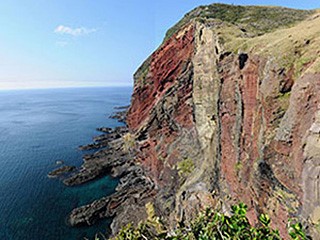
Alligators used to live on what was once Oki?
In the early summer of 2008, a university student who visited Oki in order to conduct a geological survey discovered a fossilized alligator tooth from a 20 million-year-old geological layer. Fossils of pond snails and freshwater bivalves had already been discovered in the same location, but this was the first time for an alligator tooth to be found there.
“Alligators used to live on Oki.” What this means is that in primeval times, there had to have been a lake environment, the sort where alligators would have been able to live. But if you think about this for a moment or two, you start to realize how strange this is. Oki is a group of islands that are in the Sea of Japan, and are of a geographical structure much different from that of lakes.
However, it is this very situation that hides the secret behind the formation of the Japanese Archipelago and the Sea of Japan. Exactly how did the Oki Islands form? Let us explain.
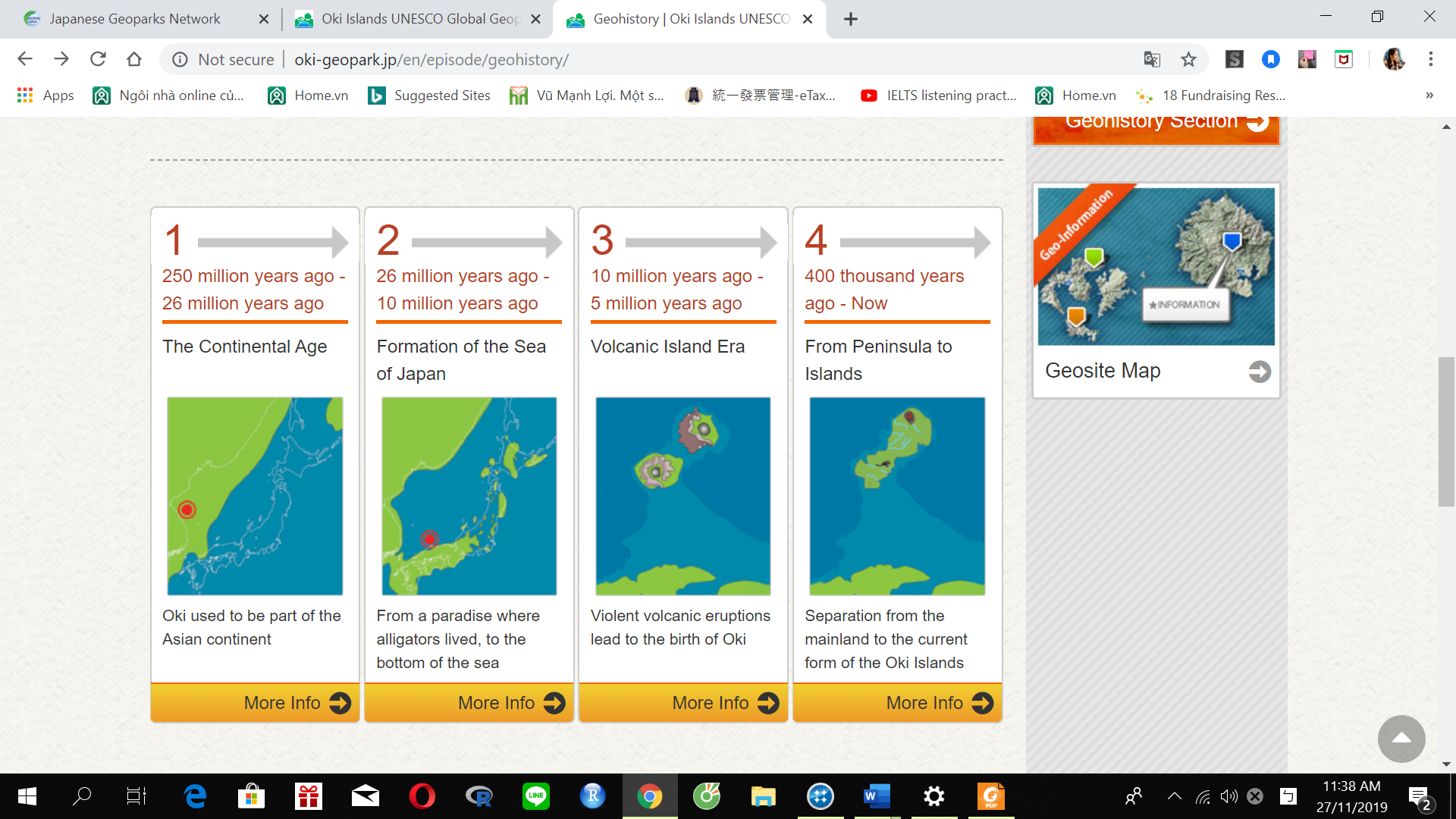
Unique Ecosystem – Oki Salamander
You can find species from Southern Japan and Northern Japan in Oki?
Having changed over the course of several eras, the Oki Islands finally became the outlying islands they are today around 10,000 years ago. The history of this land, along with its geological features, created the mysterious ecosystem of Oki that still exists to this day.
The natural features found in the Oki Islands UNESCO Global Geopark are, even from a worldwide viewpoint, quite mysterious. Vegetation normally found in Hokkaido (Northern Japan) exists right alongside vegetation normally found in Okinawa (Southern Japan). Continental plant life, alpine plant life, even glacial-era plant life coexist in low-lying areas along the coastline. The reason for this has yet to be made clear, so there are still many secrets hidden away in Oki’s ecosystem.
This strange distribution of plant life has an effect on Oki’s insect and animal life. From continental insects that are spread throughout the islands to marine life, you can observe life forms from both the northern and southern extremities of Japan.
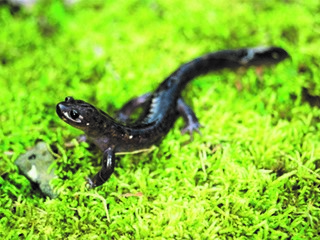
Endemic species
From an evolutionary standpoint, 10,000 years is considered to be a short time span. Let us introduce some of the life forms that are only found in Oki, and show you the evolutionary changes that they went through in order to survive.
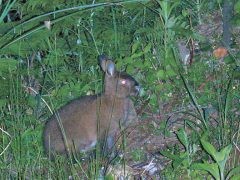
Oki Rabbit
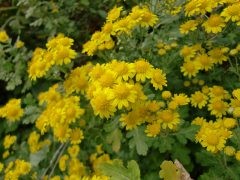
Oki Chrysanthemum
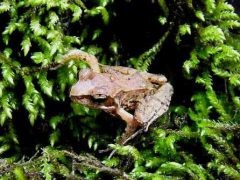
Oki Rana tagoi
Unique Vegetation
One of the nice things about Oki is that you don’t have to go to a special location to be able to observe the mysterious vegetation that lives there. You can see them on the beaches or alongside coastline hiking trails. For example, rugosa roses from the north, Nago orchids from the south, alpine Japanese Thuja, and glacial-era dogtooth violets all intermingle along the seashore, blowing in the sea breeze.
Here are some of the locations on Oki where you can observe the unique distribution of vegetation found here.
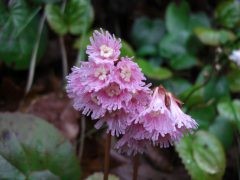
O-iwa-kagami Schizocodon
(Subalpine plant)
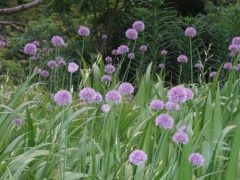
Shirouma-asatsuki chives
(Glacial age relict species)
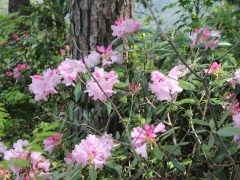
Oki Rhododendron
(Endemic species)
Marine Life
You can see Oki’s mysterious ecosystem not only on the land, but in the surrounding sea as well. For example, you can find seaweed inhabiting the sea floor around Oki (a species of green algae that is the only seaweed to be selected as a natural treasure) that is normally distributed in the Red Sea, which is nearly 10,000 kilometers away.
Also found here are the luna lionfish and Alveopora coral, both of which live in Japan’s tropical ocean areas, and a type of starfish over one meter long which is thought to be a new species. These are just a few examples of the marine life representative of the Oki Islands UNESCO Global Geopark.

Kuroki-zuta seaweed
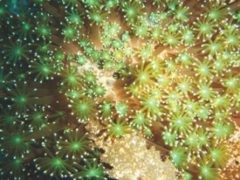
Nihon-awa sango Alveopora coral
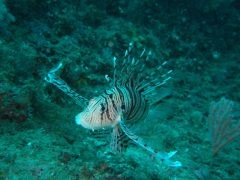
Luna lionfish
Lifestyle and Traditions – Shuhaira Dengaku
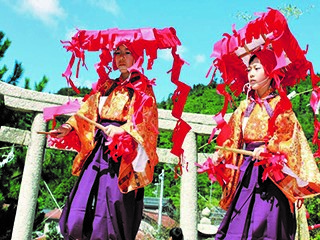
An ancient culture that continues to live
These volcanic islands created six million years ago have been inhabited since ancient times. Stone artifacts such as arrow heads made from Oki obsidian as long as 30,000 years ago have been discovered around the islands.
The culture of the islands stretches back from these ancient times, to the early Middle Ages when Oki became islands of remote exile where nobles such as two emperors were sent. Later in the early modern period, the islands became an essential port of call for merchant ships travelling along the Kita-mae-bune Trading Route. This history has fostered a diverse and rich culture on the Oki Islands.
Vestiges of the ancient past still linger in the vibrant culture of the Oki Islands. These traditions have been preserved to this day by the simple-living island people.
Oki’s History: Protected and Passed Down
What are the reasons for the diverse culture of the Oki Islands?
How did such a diverse cultural landscape develop on the Oki Islands? The development of history and culture in the islands can be linked to these key elements: Obsidian, Remote Island Exile and the Kita-mae-bune Trading Route.

Oki Obsidian

Omatsu Stone Monument

Emperor Gotoba
Wisdom of the Islanders: Making Use of the Climate
Natural and Cultural Landscape Formed by Volcanic Islands
The people of the Oki Islands have lived alongside the land created by volcanic activity and garnered the skills required to utilize it in their way of life. In order to survive on steep and barren land with few flat areas, the people devised a unique four-field farming system called Makihata, and to provide a safe method of transportation between villages, dug tunnels in a cliff made by pyroclastic flow six million years ago. From terraced rice paddies to the location of the islands’ airport, you can see the people’s wise ways of working with the land.

Stone walls used to mark Makihata fields

Oki Airport – Built on a lava plateau
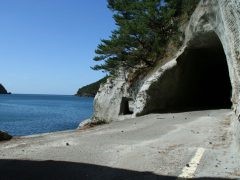
Fukuura tunnels – Dug over three generations
Unique Culture of Oki
Unique Culture and Performing Arts
Though culture has been brought from many different places, a unique culture characteristic of remote islands has developed in Oki. As one example, the unique method of ‘winning one match, losing the next’ of Oki Traditional Sumo, reflects the people’s ways of living harmoniously with each other on small islands.
Here are some examples of the unique culture, folklore, and performing arts of the Oki Islands that have since disappeared from elsewhere in Japan.
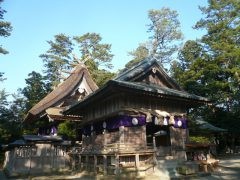
Mizuwakasu Shrine
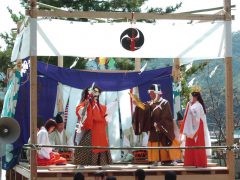
Dōzen Kagura (Nishinoshima Town)

Oki Traditional Sumo
[1] http://www.oki-geopark.jp/en/










